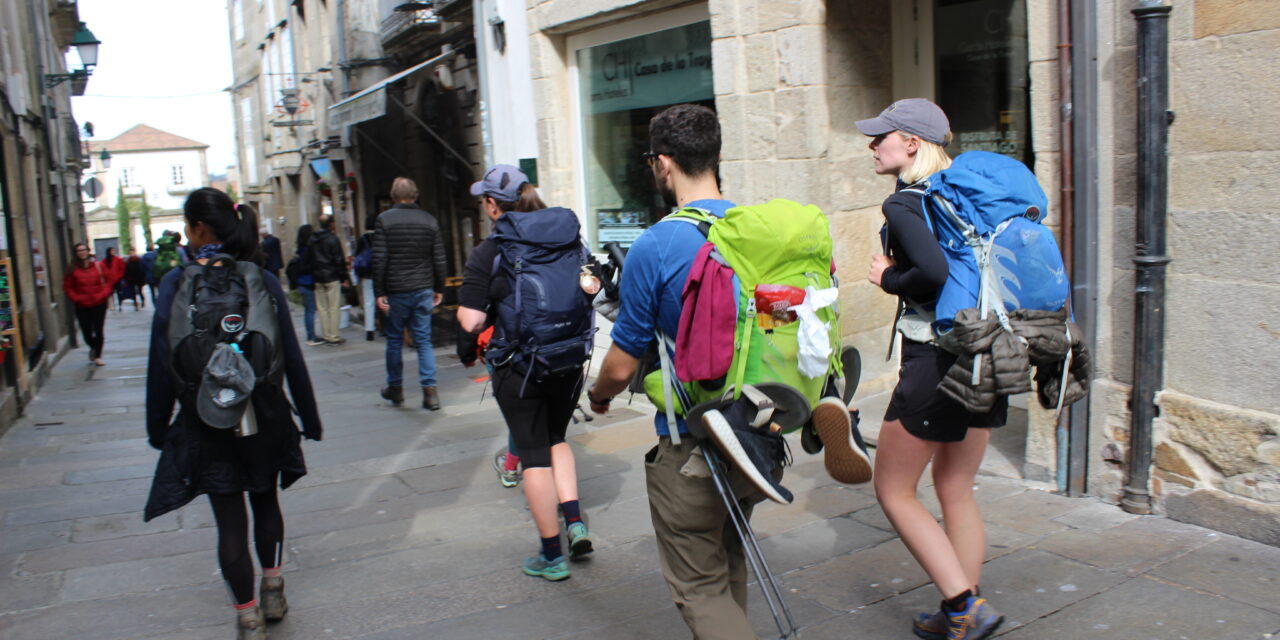The Camino continues to grow with 446,039 Compostelas delivered in a year without a jubilee but in which the shadow of the pandemic seems to have definitively disappeared.
In 2023, 187,185 Spaniards and 243,141 foreigners collected the Compostela, that is, only 44% were Spanish, so the percentage of foreigners continues to grow. The international and global character of the Camino is strengthened.
Of them, 404,178 traveled the Camino on foot; 22,881 by bicycle; 5,726 by boat; 606 on horseback; 276 under sail; and 198 in a wheelchair.
One of the great news this year was the enormous growth in pilgrims from the United States, 32,069, which vastly outnumber the Germans, Italians and Portuguese, who traditionally occupy the first positions among foreigners. The return of the East after the pandemic was also confirmed with 7,563 pilgrims from Korea, a significant presence from Japan and the strong emergence of new Asian countries such as Indonesia, Taiwan and China. Also highlighting the presence of pilgrims from Ukraine and Russia, once again the Camino is presented here as one of the few spaces for coexistence and encounter.
The figures and nationalities most present on the Camino after Spain were: USA 32,069; Italy 28,649; Germany 24,347; Portugal 20,698: France 10,619; United Kingdom 10,516; Mexico 8,277; Korea 7,563; Ireland 6,946; Australia 6,814; Canada 6,726; Brazil 6,248; Netherlands 5,886; Poland 5,526; Czech Republic 4,825; Argentina 4,562; Colombia 3,793; Denmark 3,578; Belgium 2,981; Taiwan 2,513; Austria 2,430; Indonesia 1979; Switzerland 1,883; Hungary 1,703; South Africa 1,562; Japan 1,359; Slovakia 1,358; Sweden 1,357; Venezuela 1,341; Romania 1,339; New Zealand 1,232; Ukraine 1,186; Philippines 1,150; Chile 1,080; Russia 1,048; China 1,037; Uruguay 914; Puerto Rico 835; Bulgaria 819; Croatia 798.
The most traveled Way was the French Way (219,786); followed by Central Portuguese (88,717); Portuguese Coastal Way (52,717); English (24,093); Primitive (20,714); North (20,583); Via de la Plata (7,964); other paths (2,029); and small presence of itineraries such as Barbanza, Geira, Muros-Noia, etc. The statistics of the Pilgrim’s Office include 1,787 pilgrims who arrived in Compostela along the Fisterra-Muxía Way, but not those who traveled the route as a continuation of their pilgrimage to Santiago, although we do not have figures, the news published in the press throughout the year indicate growth compared to previous years.
The main starting points were Sarria (131,129) and Tui (32,855). Very close in numbers were also the traditional starting points of long distances on the French and Portuguese routes: S. Jean P. de Port (31,670) and Roncesvalles (4,322) on the French route; Porto on the Central Portuguese Way (27,907) and Portuguese Coastal Way (18,366). Among the most important starting points, one of the two beginnings of the Camino Inglés in Galicia also stands out: Ferrol (22,953) and Oviedo as the starting point of the Primitivo (12,215). In addition to a great diversity of starting points on the various routes of the Camino de Santiago, we are interested in highlighting the presence of some very long-distance points of origin such as: Le Puy (3,315), Italy (308), Germany (276), Belgium (274), Arles (158), Vezelay (158), Switzerland (151), Paris (147), Ireland (103), United Kingdom (102), Austria (81), Poland (42), Czech Republic (25 ), Denmark (20), Rome (20), Norway (18), Sweden (13), Luxembourg (11) and Jerusalem (9).











